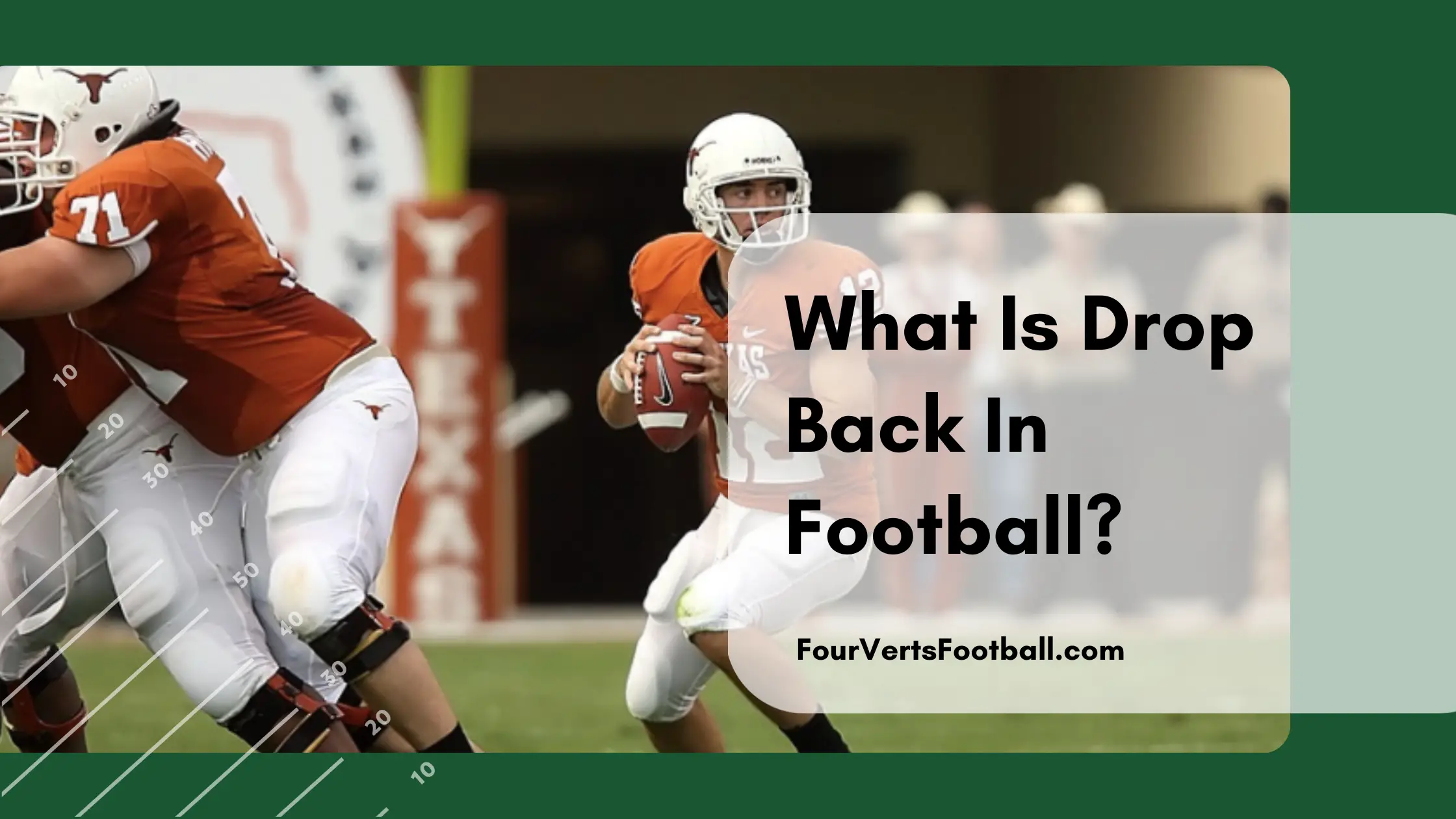Are you wondering what a drop back is? If so you’re in the right place as this guide is going to answer everything you need to know about drop backs in football.
A drop back in football is when the quarterback catches the snap and moves backwards from the line of scrimmage. There are three common types of dropbacks in football. The three-step drop, the five-step drop, and the seven-step drop.
Why Do Quarterbacks Drop Back?
The purpose behind a quarterback drop back is to further themselves from the defense. As the quarterback takes the steps back he put more distance between himself and the defensive line.
It is crucial to remember this defensive lineman will have to get past an offensive lineman to get to the quarterback. Travelling back a few steps for the quarterback is an easy thing to do. But for the d-lineman that have to push back the o-line the distance of a dropback makes their job much harder.
This extra distance between the defensive line ultimately buys the quarterback more time before he must throw the ball. This is hugely beneficial as it often takes time for receivers to beat their coverage and for longer routes to develop.
Explaining three, five, and seven-step drops?
As we stated earlier their are three different types of drop backs the three-step, five-step and seven-step. But what exactly is the purpose of these differing dropbacks?
Three Step Drop
The three step drop as you have likely imagined involves the quarterback taking only three steps backwards once the play starts. A three step drop is completed incredibly quickly and is most typically used for quick passes.
Oftentimes these drops will play out in three quick steps and then a short pass underneath to a receiver. The three step drop is the shortest drop back in football and is best for quarterbacks that like to get the ball out of their hands quickly.
Five Step Drop
The five step drop is a mid range drop back and can be utilized on short, intermediate and long throws. Often with these plays the quarterback will take his drop back and spend a second or two surveying his options.
This drop back will allow enough time for any intermediate routes to develop as well as some deeper routes.
The one drawback of a five-step drop is the time it takes to complete the drop back. On this play the quarterback is not going to be able to throw the ball until the drop back is complete. This means your offensive line will need to protect you until then.
Seven Stop Drop
The final drop back we are going to cover is the seven-step drop. This is the longest of the dropbacks and is reserved for deep passes and long developing plays. These plays require significant pass blocking and are typically reserved for college and professional play.
Lower levels of football struggle to have the protection as well as the arm strength necessary to complete these throws.
Oftentimes teams will designate six or seven blockers on a seven step drop instead of the usual five. This will allow a better chance for the quarterback to complete his throw before a defender gets to him.
Seven step dropbacks are by the least common of these three dropbacks. These are almost always reserved for when the offense is looking to attempt a deep shot. This large drop back is accompanied by deep routes that often take a long time to develop.
Go routes, posts, corners, and deep crossing routes are often utilized on these long drop backs.

